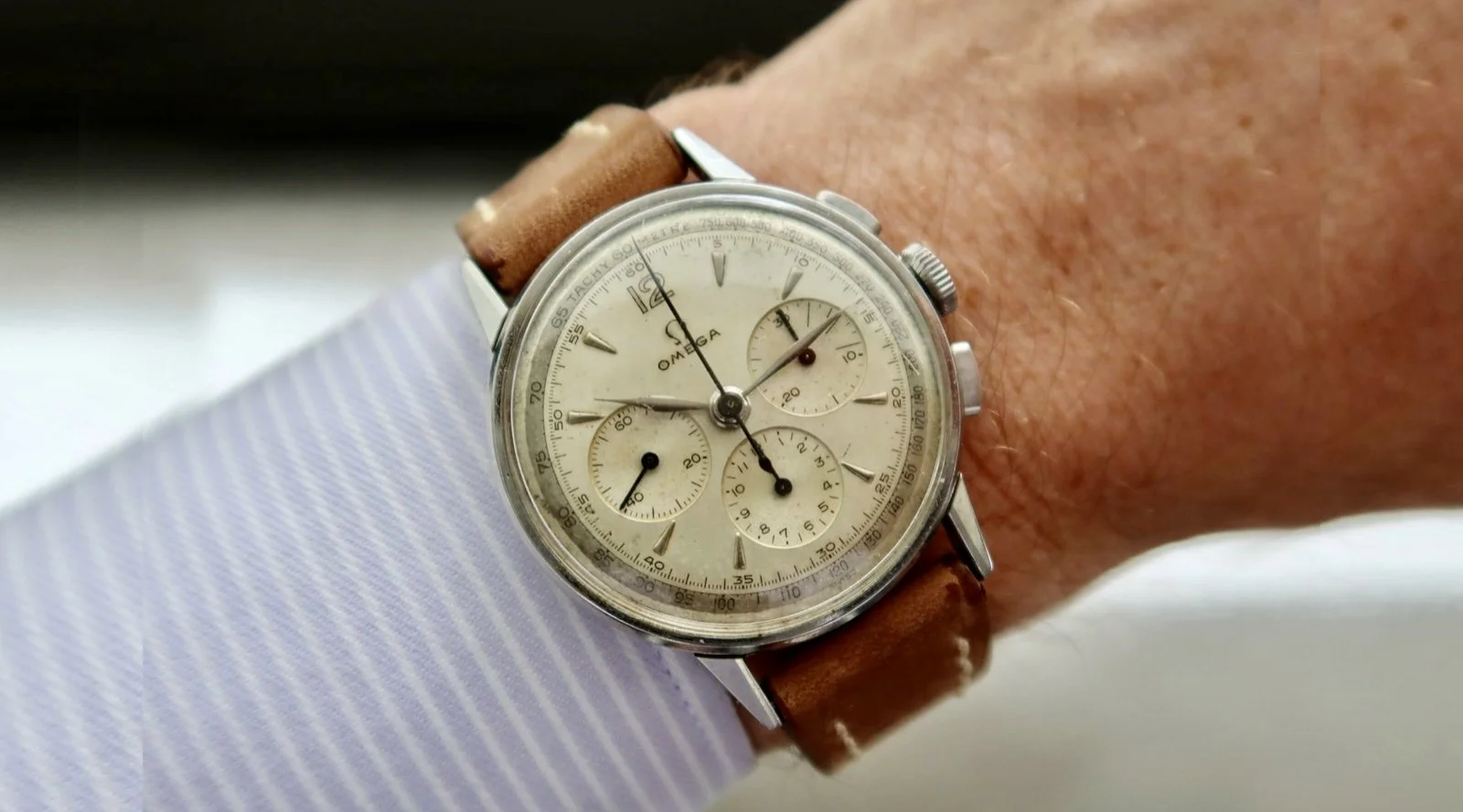The 1990's Omega Speedmaster Michael Schumacher Racing Automatic Chronograph with Yellow Dial
The Omega Speedmaster does not need much of an introduction. It was first introduced in 1957 as a racing watch, but gained much of its lore from its importance in space exploration. In the summer of 1996, Omega released a special Speedmaster that harkened back to its roots of being on the wrist of drivers.
In the 90’s, Michael Schumacher was an athlete that was on the top of everyone’s mind. For those of you who do not know, Michael Schumacher is a German former racing driver who began his career in Formula One in 1991. He made his F1 debut with the Jordan-Ford team at the Begian Grand Prix, where he qualified seventh, but had to retire during the race due to mechanical issues. He continued to have success in his career and won his first F1 Championship in 1994 while driving for Benetton. He later went on to win seven championships throughout his career.
1996 was a busy year for Schumacher, as he joined the infamous Ferrari F1 team, but also became a brand Ambassador for Omega. This partnership made total sense, given Omega’s history with racing. To launch this new ambassadorship, Omega launched the Omega Speedmaster Racing, a model notable for its “younger aesthetics”. The watch was first revealed on July 22, 1996 at Schumacher’s go-kart track in Kerpen, Germany.
The watch was launched in two versions, one with a red dial, and the other with a yellow dial. It featured an iconic racing-style minute track and had a rubber presentation box that looked like the tires of an F1 car.
The version we have today is the yellow-dial, which at first glance, can lead one to mixed feelings. Admittedly, when one sees pictures of the watch online, it can often feel like the lesser of the two versions, given the vivid nature of yellow compared to the deeper, more mellow red dial. But once this watch is on the wrist, opinions can change very quickly.
This version of the Michael Schumacher Racing dates to between 1996 and 1999, the years of production for these watches. It is a common misconception that these watches were limited editions or special editions, which they were not. However, they were only produced for about 3 years.
The watch has a 39mm stainless steel case in overall good condition, with few signs of wear. The watch features a black tachymetre bezel in very good condition. Typical of the Speedmaster line of watches, the watch has twisted lugs, and stainless steel caseback with the Speedmaster Hippocampus seahorse logo. The crown is signed with the Omega logo. The dial is a striking yellow colour which is, as stated before, one of two colours the Racing Speedmaster was launched with in 1996. The racing-style minutes track around the outside of the dial contrasts nicely with the accents of black and red throughout the dial.
The layout of the sub-dials provides a 60 seconds counter at the 3 o’clock, 12 hour counter at the 6 o’clock, and 30 minute counter at the 9 o’clock, all of which are slightly depressed into the dial providing depth. The watch runs on the caliber 1143 from Omega, which is based on the ETA 2892. The chronograph is fairly pleasant to use, with a very buttery start/stop/reset function.
It can be difficult to find something to criticize about any Omega Speedmaster. The watches are design extremely well, and are very wearable. Some may look at the yellow dial and find it as an adverse feature of the watch, but as mentioned before, the yellow dial is so much better in person. The colour is not as harsh as it comes across in pictures. If there was something to criticize about the watch, it would likely be the movement. For die-hard Speedmaster enthusiasts, an Omega manual wind movement is only what should be fitted in a Speedmaster. The caliber 1143 is a nice overall looking movement, but deviates from what was originally launched in 1957, which was the famous column-wheel caliber 321 movement.
At 39mm, the watch is incredibly wearable for most people. It isn’t overly large, which was quite common during the late 90’s, early 2000’s, but not small where it restricts the amount of possible wearers. The racing minutes track around the outside of the dial is a nice nod to the icon and incredible driver that was Schumacher. One feature that is very attractive is the sub-dials which, as mentioned before, are slightly depressed into the dial. It is something you will only notice if looking carefully at the dial, but a lot of times with iconic designs like the Speedmaster, it is the small things that can get collectors excited.
The Racing Speedmaster was an important step in Schumachers career, but also an important step in the history of the Omega Speedmaster. One does not find colourful dials in the historical line-up of Speedmaster’s very often, which makes these watches quite collectable. They are also extraordinarily wearable with an exciting bit of history.
Enjoy!












